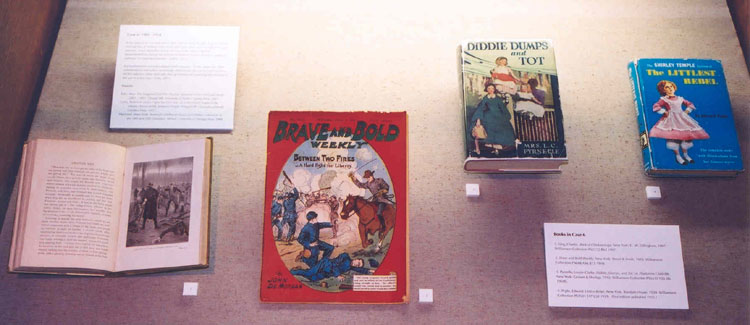
Case 6: 1901-1914
In his analysis of Civil War novels from 1861 - 1950, Robert A. Lively says the concept that all soldiers, North and South, were brave, heroic, and patriotic "was a bestseller view at the turn of the century; genteel broadmindedness before the torment of brothers divided served as standard palliative for lingering bitterness," (Lively, 1957).
But brotherhood and reconciliation were exclusive. "In the 1880s and 1890s...commentators and writers increasingly attached the idea of Civil War sacrifice for the nation to white men only, thus gendering and racializing the memory of the war in a new way," (Fahs, 2001).
Sources:
Fahs, Alice. The Imagined Civil War: Popular Literature of the North and South, 1861 - 1865. Chapel Hill: University of North Carolina Press, 2001.
Lively, Robert A. Fiction Fights the Civil War: An Unfinished Chapter in the Literary History of the American People. Chapel Hill: University of North Carolina Press, 1957.
MacLeod, Anne Scott. American Childhood: Essays on Children's Literature of the 19th and 20th Centuries. Athens: University of Georgia Press, 1994.
Books:
1. King, Charles. Rock of Chickamauga. New York: G. W. Dillingham, 1907. Williamson Collection PS 2172 R63.
2. Brave and Bold Weekly. New York: Street & Smith, 1910. Williamson Collection PS 648 A36 B73.
3. Pyrnelle, Louise-Clarke. Diddie, Dumps, and Tot: or, Plantation Child-life. New York: Grosset & Dunlap, 1910. Williamson Collection PS 3531 Y55 D5.
4. Peple, Edward. Littlest Rebel. New York: Random House, 1939. Williamson Collection PS 3531 E47 L58.
(First edition published 1911).

